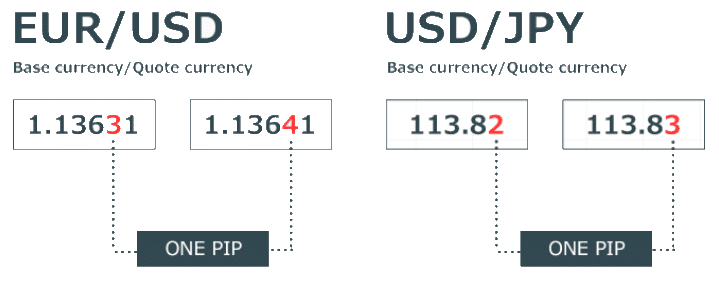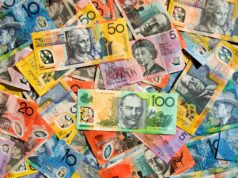Many people get confused when terms such as pips and pipettes are thrown at them. However, familiarity with such ideas not only pays well but is also the sine non qua of trading the forex market. This guide will provide the bare-bone understanding of pipettes and how they translate to success and profitability in this business.
Understanding Pips
Stripped of all its mystique, a pip is nothing but the abbreviated version for Point in Percentage. It assesses alterations in the valuation of a pair. It is ascertained, by and large, by utilizing the decimal place on the extreme right. It brings to the fore the variability in the last point past the decimal due to the sole reason that pairs have a tendency to be priced up till that many decimal places. Hence, it is tantamount to fractioning the rate by 0.0001.

The only exceptions to the aforementioned tenet are the pairs that involve the Japanese Yen since these are limited to a couple of places beyond the decimal. The pipette for these exceptions is ascertained by fractioning the rate by 0.01.
Since the quotes are obtained from the forex pairs, the pipette is an invaluable conception in the forex market. The term is cited to denote the spread as well as highlight the potential for profitability or loss that is resultant from a particular pair’s trade.
Determining pip value
There are three basic components that influence the pipette value.
These are as follows:
- The trading currency pair
- The rate of exchange
- The volubility of the trade
All these factors combined have a substantial bearing on the fluctuations of pipettes as well as the open position value. An example is warranted here to better comprehend this statement.
Let’s say that after gaining 21 pips, a $350,000 trade demanding USD/CAD closes at 1.0565. To ascertain the CAD amount exemplified by each pipette, we have to multiply the given amount by 1 pipette. Thus, we receive 35 CAD per pipette.
Thereafter, to ascertain the USD amount represented by each pipette, we fraction the CAD per pipette by the closing exchange rate. That equals to 33.12 USD for every pipette.
Now, if we were to ascertain how much profit has the trade made, we have to multiply the increase in pipettes (21) by the amount of USD per pipette (33.12). The profit, thus, equates to US$695.69.
Pips and profitability

As was delineated in the prior section, the movement of a pair tells us whether a trade is going to end up being profitable while not depend on one’s position at the close of the day. For illustration purposes, let us concern ourselves with the EUR/USD pair: if the Euro values up in proportion to the USD, a trader gains from purchasing the pair.
After purchasing the Euro for 1.1840 and exiting at 1.1902, one can expect to make 62 pipettes on the trade. That is equivalent, as can be seen from subtracting the latter from the former, which is the differential from when one enters and exits.
Similarly, exchanging the JPY and the USD at the rate 112.04 will lead to a loss of 4 pipettes if the trade position ends up at 112.08 but a profit of 2 pipettes if it ends up at 112.02.
Even though the difference may not look like much in a market that deals in trillions every day, both profits and losses tend to add up rapidly. For instance, if we were to compute a $10 million trade in the previous example that closes at 112.02, the trader will receive a profit of about 200,000 JPY profit (10 million x 112.04-112.02). In USD, this profit would be about $1785 (200,000 ÷ 112.02).
Pip example
Let us use a few more illustrations to drive home the mathematical computations.
Example #1
First, let’s use the USD/CAD pair.
The computation is done thus: the variance in quoted currency multiplied by the rate. Since the rate for the pair is at 1.0200, the answer equals 0.000009804 USD per unit traded.
When we take a trade of ten thousand units of the pair in question, then the pipette difference to the rate would be around 0.98 USD.
Example #2
Let us take another example, this time using the GBP/JPY pair. The exchange rate is at 121.00 and since then Yen pairs are exceptional, 1 pipette change would be 0.1 JPY.
Again, the computation is done thus: the variance in quoted currency multiplied by the rate ratio. With the figures in place, the pipette equates to 0.0000817 GBP.
Thus, if 10,000 units were traded of the GBP/JPY pair, then the value of each pipette change will roughly be 0.817 GBP.
Pip value in your currency
Once the positional value is computed, one can even see it in terms of one’s own currency. If it is USD, using the illustration from the prior section, one can get the value conversion of 0.817 GBP into USD by utilizing the rate ratio of GBP/USD at 1.5589.
All that is requisite is the division of the rate by the pipette value found in the prior example. Then that equates to 1.2654 USD per pipette change.
Conclusion
Possessing even the bare-bones understanding of the conception of the pips is invaluable to getting a grip of the forex market for a trader. Through it, one can compute the gains and losses that are in store with trades, particularly through pipette movements.
A few simple mathematical computations are all it takes. The sooner one gets a hang of the computation of pipette movement, the better it will be for those in the trading business to appreciate and be aware of the ever-altering values.




